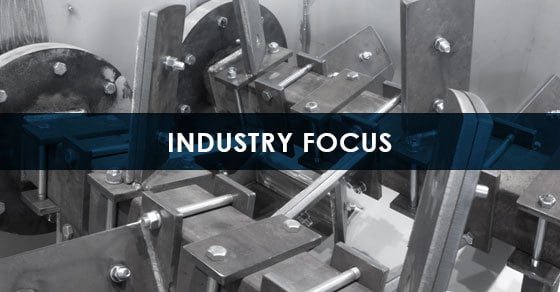The copper industry is under increasing pressure to manage concentrates with a high content of arsenic.
Arsenic-laden concentrates have always been an issue for the industry, but as complex ore bodies increase and environmental regulations tighten, the problem is mounting at a time when demand for copper is projected to hit all-time highs, serving as a foundation in the transition to a low-carbon economy.
The mounting pressure has copper producers turning to a mixing technique known as blending, and pugmill mixers, already well established for processing copper concentrates, look set to be the industry’s answer to meeting blending demands.
Arsenic in Copper Concentrates: A Recurring Problem
A high-arsenic content in copper presents a liability and incurs significant treatment costs, but the problem is nothing new; it has steadily been getting worse and has been thrown into the spotlight more recently by the coronavirus pandemic. The current arsenic problem can be attributed to:
Copper Ore Grades are Declining & Complex Ore Bodies are on the Rise
Copper ore grades have been on a steady decline. In 2018, Mining.com reported on a study that found the average grade of copper projects in operation at the time to be 0.53%, and those in development just 0.39%.
Further, the early abundance of prime copper deposits meant that copper miners could forgo the arsenic-rich deposits in favor of those with a lower arsenic content. But as choice copper deposits get mined out and become more scarce, miners have less of a choice and are forced to exploit these more complex ore bodies.
CMI Capital reported last year that the amount of complex concentrates on the market, as well as arsenic penalties resulting from dirty concentrates, are likely to increase.
Tightening Environmental Regulations
Copper smelters have been a major contributor to atmospheric arsenic emissions and as such, have been a focus of environmental regulation. As a result, the number of smelters able to accept the so-called dirty concentrates has significantly declined.
China will not accept anything exceeding 0.5% arsenic, a baseline it seems other smelters have followed. Rumors have suggested talks on lowering that threshold to 0.4% to further combat pollution.
Coronavirus
As the global coronavirus pandemic has thrown a wrench in supply chains of all types, it has also tightened supply of concentrates, making the acquisition of clean concentrates more challenging in some cases.
Currently, copper smelters in China are hoping they can convince authorities to permit them to put blending facilities at ports, allowing them to accept a higher level of arsenic in concentrates and widening the range of concentrates they can bring in. Reuters recently reported that China Minmetals Corp and Jinchuan Group are hoping to build a new blending facility in the Guangxi region of southern China.
Why Blend Copper Concentrates?
Copper concentrate blending is gaining more attention as a way to address arsenic-rich concentrates. By blending “clean” copper concentrates with “dirty” concentrates, the overall arsenic content of the mix is reduced.
Blending isn’t the industry’s first choice, but is currently the only viable option; ideally, arsenic could be removed at the source, but an economically and technically viable solution has thus far eluded the industry. Further, as arsenic content increases, more clean concentrates will be needed to dilute the arsenic to an acceptable threshold.
Blending plants are already in operation in some parts of the world. In 2019, Glencore opened up a blending facility in Taiwan to serve the Chinese market with low-arsenic concentrates during a time when high-arsenic concentrates were hitting the market.
Pugmill Mixers: Ideal for Mixing Copper Concentrates
The pugmill mixer, also known as a pug mill or paddle mixer, is the obvious choice for meeting blending plant processing needs.
The pugmill mixer is a continuous horizontal mixer already used by copper smelters to blend copper concentrates with components such as flux, reverts, matte recycle, and dust recycle prior to smelting.
In doing so, the components are homogeneously combined into a de-dusted mixture, which reduces material loss on the way to the smelter, improves operational efficiency, and ultimately, enhances copper recovery.
Pugmill mixers are chosen for this application because of their ability to homogeneously combine disparate components into a uniform mixture. At the same time, their rugged build and mixing action is ideal for the specific demands of processing copper concentrates, which are typically abrasive, corrosive, and processed at high capacities.
“We’ve seen more companies looking at our pugmill mixers for their blending plants, particularly in the time that coronavirus has taken hold,” comments FEECO Process Sales Engineer and agglomeration expert, Chris Kozicki. “This is a problem that is not going to go away any time soon, and until copper processing technologies advance, blending is the best option.”
Conclusion
While the copper industry is under pressure to manage increasingly arsenic-rich concentrates as a result of declining ore grades, tightening environmental regulation, and more, blending copper concentrates with a pugmill mixer offers the opportunity to reduce arsenic content to meet the threshold accepted by smelters.
FEECO offers the most reliable pugmill mixers in the industry, with many in operation at copper smelters around the world. For more information on our custom pugmill mixers, contact us today!



